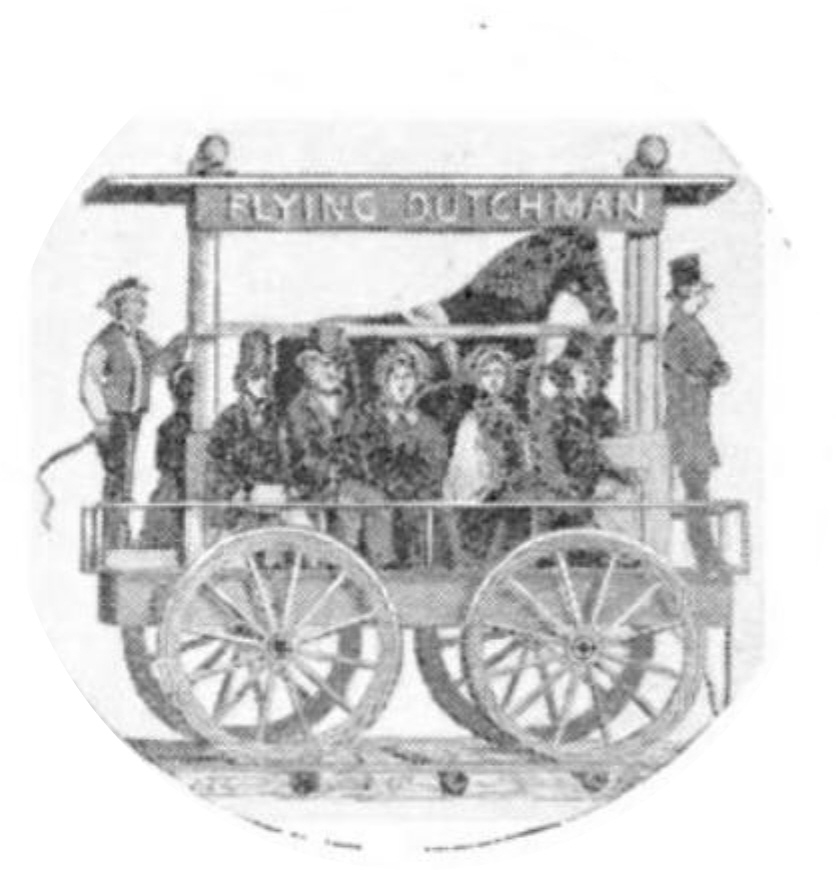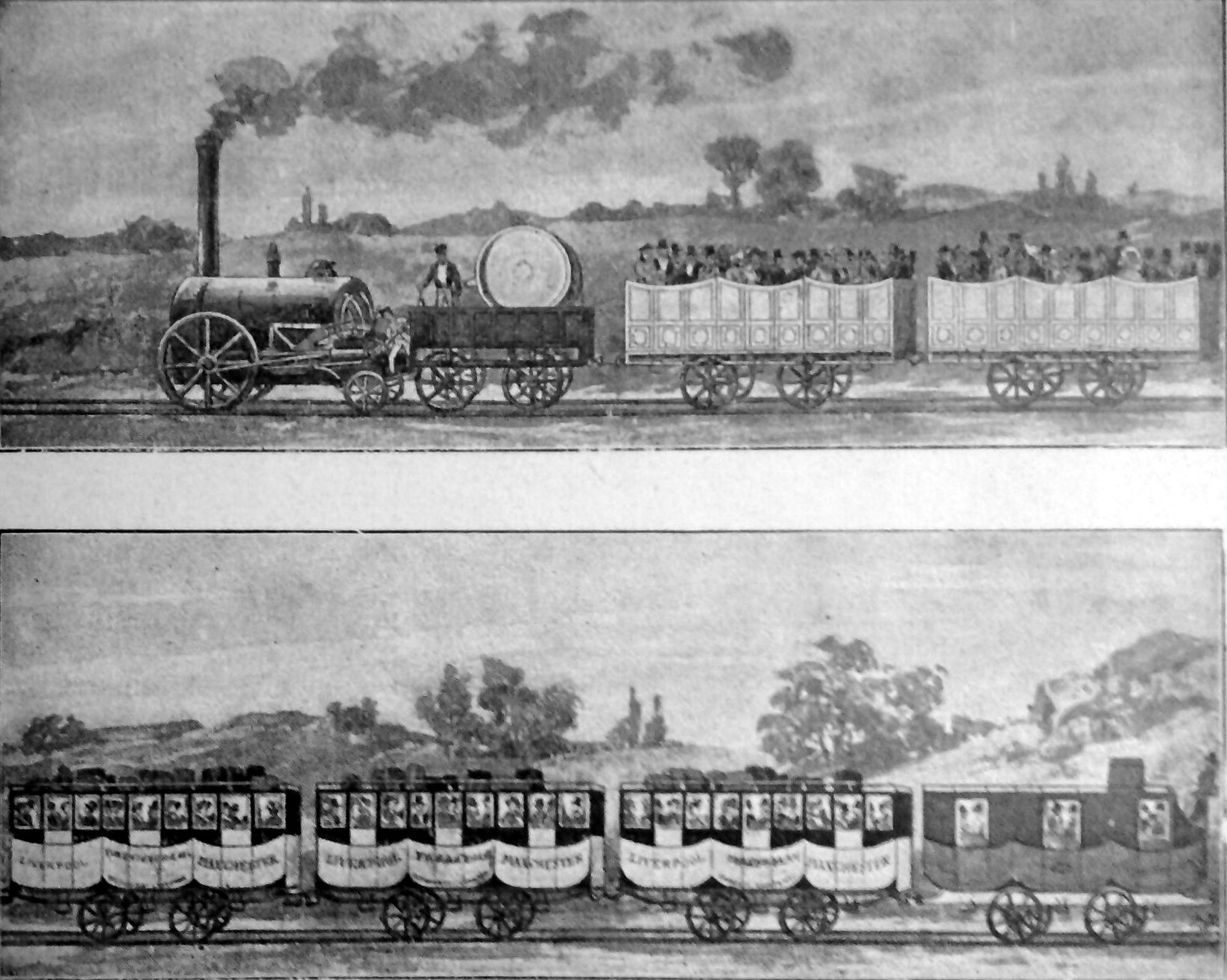|
Thomas Shaw Brandreth
Thomas Shaw Brandreth, FRS (24 July 1788 – 27 May 1873) was an English mathematician, inventor and classicist. Early life and education Brandreth was the son of a Cheshire physician, Joseph Brandreth. He studied at Eton and received a BA from Trinity College, Cambridge in 1810 as Second Wrangler, second Smith's Prizeman, and chancellor's medalist, attesting to his keen intelligence. He received his MA in 1813, and was subsequently elected to a fellowship at Trinity. He then entered the Inns of Court, initially at Lincoln's Inn in 1810, but he migrated to the Inner Temple in 1813 and was called to the bar in 1818. He entered legal practice at Liverpool, but was much diverted from advancement by his interest in inventions. Inventions Elected a Fellow of the Royal Society in 1821 for mathematical achievements, he had by that time invented a logometer (an early slide rule), and went on to design and patent a friction wheel and a clock escapement. These achievements led h ... [...More Info...] [...Related Items...] OR: [Wikipedia] [Google] [Baidu] |
Fellow Of The Royal Society
Fellowship of the Royal Society (FRS, ForMemRS and HonFRS) is an award granted by the judges of the Royal Society of London to individuals who have made a "substantial contribution to the improvement of natural science, natural knowledge, including mathematics, engineering science, and medical science". Fellow, Fellowship of the Society, the oldest known scientific academy in continuous existence, is a significant honour. It has been awarded to many eminent scientists throughout history, including Isaac Newton (1672), Michael Faraday (1824), Charles Darwin (1839), Ernest Rutherford (1903), Srinivasa Ramanujan (1918), Albert Einstein (1921), Paul Dirac (1930), Winston Churchill (1941), Subrahmanyan Chandrasekhar (1944), Dorothy Hodgkin (1947), Alan Turing (1951), Lise Meitner (1955) and Francis Crick (1959). More recently, fellowship has been awarded to Stephen Hawking (1974), David Attenborough (1983), Tim Hunt (1991), Elizabeth Blackburn (1992), Tim Berners-Lee (2001), Venki R ... [...More Info...] [...Related Items...] OR: [Wikipedia] [Google] [Baidu] |
Barristers In England And Wales
Barristers in England and Wales are one of the two main categories of lawyer in England and Wales, the other being solicitors. Barristers have traditionally had the role of handling cases for representation in court, both defence and prosecution. (The word "lawyer" is a generic one, referring to a person who practises in law, which could also be deemed to include other legal practitioners such as chartered legal executives.) Origin of the profession The work of senior legal professionals in England and Wales is divided between solicitors and barristers. Both are trained in law but serve differing functions in the practice of law. Historically, the superior courts were based in London, the capital city. To dispense justice throughout the country, a judge and court personnel would periodically travel a regional circuit to deal with cases that had arisen there. From this developed a body of lawyers who were on socially familiar terms with the judges, had training and experience i ... [...More Info...] [...Related Items...] OR: [Wikipedia] [Google] [Baidu] |
Thomas Brandreth (Royal Navy Officer)
Admiral Sir Thomas Brandreth, (6 August 1825 – 10 December 1894) was a Royal Navy officer who went on to be Third Naval Lord and Controller of the Navy. Naval career Brandreth was educated at Eton like his father Thomas and entered the Royal Navy in 1838. He was appointed a lieutenant in the Royal Navy in 1845.Sir Thomas Brandreth William Loney RN Promoted to in 1863, he was given command of HMS ''Edgar'' and then HMS ''Lord Warden''. He was appointed captain of the gunnery school < ... [...More Info...] [...Related Items...] OR: [Wikipedia] [Google] [Baidu] |
Cycloped
''Cycloped'' was an early horse-powered locomotive, built by Thomas Shaw Brandreth of Liverpool, which competed unsuccessfully in the Rainhill trials of October 1829. The Rainhill trials The ''Cycloped'' was the only entry in the trials that did not rely on steam power, instead utilising a treadmill that was kept continually moving by a horse mounted on top. Brandreth was one of the directors of the railway and some people believed that that gave the ''Cycloped'' an unfair advantage. But the ''Cycloped'' was a primitive idea and because of its failure to generate enough speed to equal its competitors—Burstall's ''Perseverance'', Braithwaite's ''Novelty'', Hackworth's '' Sans Pareil'' and Stephenson's ''Rocket''—the ''Cycloped'' ultimately lost the competition in the trials."The Rainhill Locomotive Trials of 1829" by C F Dendy Marshall, published in the Transactions of the Newcomen Society, 1929 Vol 9. Stephenson's ''Rocket'' eventually won the trials, maint ... [...More Info...] [...Related Items...] OR: [Wikipedia] [Google] [Baidu] |
Treadmill
A treadmill is a device generally used for walking, running, or climbing while staying in the same place. Treadmills were introduced before the development of powered machines to harness the power of animals or humans to do work, often a type of mill operated by a person or animal treading the steps of a treadwheel to grind grain. In later times, treadmills were used as punishment devices for people sentenced to hard labor in prisons. The terms ''treadmill'' and ''treadwheel'' were used interchangeably for the power and punishment mechanisms. More recently, treadmills have instead been used as exercise machines for running or walking in one place. Rather than the user powering a mill, the device provides a moving platform with a wide conveyor belt driven by an electric motor or a flywheel. The belt moves to the rear, requiring the user to walk or run at a speed matching the belt. The rate at which the belt moves is the rate of walking or running. Thus, the speed of running may b ... [...More Info...] [...Related Items...] OR: [Wikipedia] [Google] [Baidu] |
Horse
The horse (''Equus ferus caballus'') is a domesticated, one-toed, hoofed mammal. It belongs to the taxonomic family Equidae and is one of two extant subspecies of ''Equus ferus''. The horse has evolved over the past 45 to 55 million years from a small multi-toed creature, ''Eohippus'', into the large, single-toed animal of today. Humans began domesticating horses around 4000 BCE, and their domestication is believed to have been widespread by 3000 BCE. Horses in the subspecies ''caballus'' are domesticated, although some domesticated populations live in the wild as feral horses. These feral populations are not true wild horses, as this term is used to describe horses that have never been domesticated. There is an extensive, specialized vocabulary used to describe equine-related concepts, covering everything from anatomy to life stages, size, colors, markings, breeds, locomotion, and behavior. Horses are adapted to run, allowing them to quickly escape predators, and po ... [...More Info...] [...Related Items...] OR: [Wikipedia] [Google] [Baidu] |
Steam Locomotive
A steam locomotive is a locomotive that provides the force to move itself and other vehicles by means of the expansion of steam. It is fuelled by burning combustible material (usually coal, oil or, rarely, wood) to heat water in the locomotive's boiler to the point where it becomes gaseous and its volume increases 1,700 times. Functionally, it is a steam engine on wheels. In most locomotives, the steam is admitted alternately to each end of its cylinders, in which pistons are mechanically connected to the locomotive's main wheels. Fuel and water supplies are usually carried with the locomotive, either on the locomotive itself or in a tender coupled to it. Variations in this general design include electrically-powered boilers, turbines in place of pistons, and using steam generated externally. Steam locomotives were first developed in the United Kingdom during the early 19th century and used for railway transport until the middle of the 20th century. Richard Trevithick ... [...More Info...] [...Related Items...] OR: [Wikipedia] [Google] [Baidu] |
Chat Moss
Chat Moss is a large area of peat bog that makes up part of the City of Salford, Metropolitan Borough of Wigan and Trafford in Greater Manchester, England. It also makes up part of Metropolitan Borough of St Helens in Merseyside and Warrington in Cheshire. North of the Manchester Ship Canal and River Mersey, to the west of Manchester, it occupies an area of about . As it might be recognised today, Chat Moss is thought to be about 7,000 years old, but peat development seems to have begun there with the ending of the last ice age, about 10,000 years ago. The depth of peat ranges from . A great deal of reclamation work has been carried out, particularly during the 19th century, but a large-scale network of drainage channels is still required to keep the land from reverting to bog. In 1958 workers extracting peat discovered the severed head of what is believed to be a Romano-British Celt, possibly a sacrificial victim, in the eastern part of the bog near Worsley. Much of Ch ... [...More Info...] [...Related Items...] OR: [Wikipedia] [Google] [Baidu] |
Liverpool And Manchester Railway
The Liverpool and Manchester Railway (L&MR) was the first inter-city railway in the world. It opened on 15 September 1830 between the Lancashire towns of Liverpool and Manchester in England. It was also the first railway to rely exclusively on locomotives driven by steam power, with no horse-drawn traffic permitted at any time; the first to be entirely double track throughout its length; the first to have a true signalling system; the first to be fully timetabled; and the first to carry mail. Trains were hauled by company steam locomotives between the two towns, though private wagons and carriages were allowed. Cable haulage of freight trains was down the steeply-graded Wapping Tunnel to Liverpool Docks from Edge Hill junction. The railway was primarily built to provide faster transport of raw materials, finished goods and passengers between the Port of Liverpool and the cotton mills and factories of Manchester and surrounding towns. Designed and built by George Stephen ... [...More Info...] [...Related Items...] OR: [Wikipedia] [Google] [Baidu] |
George Stephenson
George Stephenson (9 June 1781 – 12 August 1848) was a British civil engineer and mechanical engineer. Renowned as the "Father of Railways", Stephenson was considered by the Victorians a great example of diligent application and thirst for improvement. Self-help advocate Samuel Smiles particularly praised his achievements. His chosen rail gauge, sometimes called "Stephenson gauge", was the basis for the standard gauge used by most of the world's railways. Pioneered by Stephenson, rail transport was one of the most important technological inventions of the 19th century and a key component of the Industrial Revolution. Built by George and his son Robert's company Robert Stephenson and Company, the ''Locomotion'' No. 1 was the first steam locomotive to carry passengers on a public rail line, the Stockton and Darlington Railway in 1825. George also built the first public inter-city railway line in the world to use locomotives, the Liverpool and Manchester Railway, which opene ... [...More Info...] [...Related Items...] OR: [Wikipedia] [Google] [Baidu] |
Escapement
An escapement is a mechanical linkage in mechanical watches and clocks that gives impulses to the timekeeping element and periodically releases the gear train to move forward, advancing the clock's hands. The impulse action transfers energy to the clock's timekeeping element (usually a pendulum or balance wheel) to replace the energy lost to friction during its cycle and keep the timekeeper oscillating. The escapement is driven by force from a coiled spring or a suspended weight, transmitted through the timepiece's gear train. Each swing of the pendulum or balance wheel releases a tooth of the escapement's ''escape wheel'', allowing the clock's gear train to advance or "escape" by a fixed amount. This regular periodic advancement moves the clock's hands forward at a steady rate. At the same time, the tooth gives the timekeeping element a push, before another tooth catches on the escapement's pallet, returning the escapement to its "locked" state. The sudden stopping of the esc ... [...More Info...] [...Related Items...] OR: [Wikipedia] [Google] [Baidu] |








